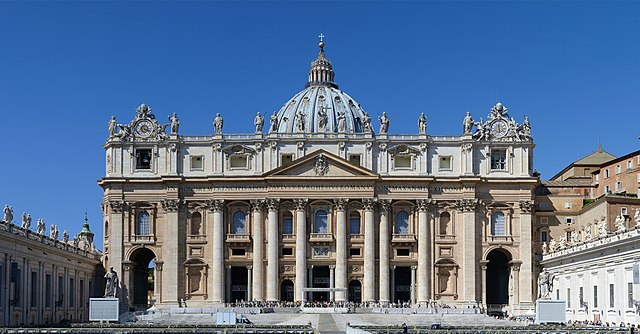Introduction
Baroque architecture, emerging in the late 16th century, is renowned for its grandeur, opulence, and dramatic intensity. This architectural style, which flourished in Europe, particularly in Italy, Spain, France, and Austria, later spread to Latin America and parts of Asia, including India. This article delves into the distinctive characteristics, origins, and notable examples of Baroque architecture, with a special focus on its presence in Rome and its influence on sculpture and painting.
:max_bytes(150000):strip_icc():format(webp)/Baroque-Belgium-534929778-5935f7015f9b589eb475ed18.jpg?resize=485%2C323&ssl=1)
Characteristics of Baroque Architecture
Baroque architecture is characterised by its boldness, intricate detailing, and dynamic forms. The following features are commonly associated with the Baroque style:

- Grand Scale and Monumentality: Baroque buildings are often large and imposing, designed to awe and inspire.
- Opulent Decorations: Richly decorated interiors and exteriors with stucco, gilding, and frescoes.
- Dramatic Use of Light and Shadow: Strong contrasts between light and dark areas to enhance visual drama.
- Dynamic Shapes: Curved lines, oval forms, and undulating facades create a sense of movement.
- Complex Plans: Use of irregular shapes and complex, multi-layered structures.
- Integration of Sculpture and Painting: Extensive use of sculptural elements and painted ceilings to create immersive environments.
Origins of Baroque Architecture
The Baroque style originated in late 16th-century Italy as part of the Counter-Reformation, an effort by the Catholic Church to counter the Protestant Reformation and attract people back to the church. It was meant to evoke emotional responses and display the power and glory of the Catholic faith. Architects like Gian Lorenzo Bernini and Francesco Borromini were pioneers in defining the Baroque aesthetic.
Notable Examples of Baroque Architecture
Baroque Architecture in Rome
Rome is home to some of the most iconic Baroque buildings, epitomising the style’s grandeur and theatricality. Key examples include:
- St. Peter’s Basilica: While the original basilica dates back to the Renaissance, its facade and piazza, designed by Carlo Maderno and Gian Lorenzo Bernini respectively, are quintessentially Baroque. The expansive colonnade of St. Peter’s Square symbolises the embracing arms of the church.

St. Peter’s Basilica| Courtesy: Wikipedia - Sant’Andrea al Quirinale: Designed by Bernini, this church features an elliptical plan and a richly decorated interior that exemplifies the Baroque fascination with curves and light.

Church of Sant’Andrea al Quirinale| Courtesy: CulturalHeritageOnline.com - San Carlo alle Quattro Fontane: A masterpiece by Francesco Borromini, this church is noted for its undulating facade and innovative use of space and light.

San Carlo alle Quattro Fontane | Courtesy: Wikipedia
Baroque Architecture in India
While Baroque architecture is primarily associated with Europe, its influence reached India during the colonial period. Notable examples include:
- Basilica of Bom Jesus in Goa: This UNESCO World Heritage Site, built by Portuguese colonisers, features a facade adorned with Corinthian columns and Baroque decorations, highlighting the style’s global reach.

Baroque Architecture, Sculpture, and Painting
Baroque architecture often incorporates sculpture and painting to enhance its dramatic effect. The ceilings of Baroque churches frequently feature elaborate frescoes that give the illusion of open skies and divine apparitions. Sculptures, often placed in niches or atop columns, add to the sense of movement and emotion. Bernini’s sculptures, such as “The Ecstasy of Saint Teresa” in Santa Maria della Vittoria, are perfect examples of how sculpture and architecture merge seamlessly in the Baroque style.

Conclusion
Baroque architecture, with its grandeur, intricate details, and emotional intensity, remains a powerful testament to the artistic and cultural currents of the 17th and 18th centuries. From the monumental churches of Rome to the colonial edifices in India, the Baroque style continues to captivate and inspire with its bold, dramatic, and theatrical forms. Understanding Baroque architecture offers valuable insights into the era’s history, religion, and artistic innovations, making it an enduring subject of study and admiration.
Feature Image: Photo by Tim Graham/Getty Images News/Getty Images





